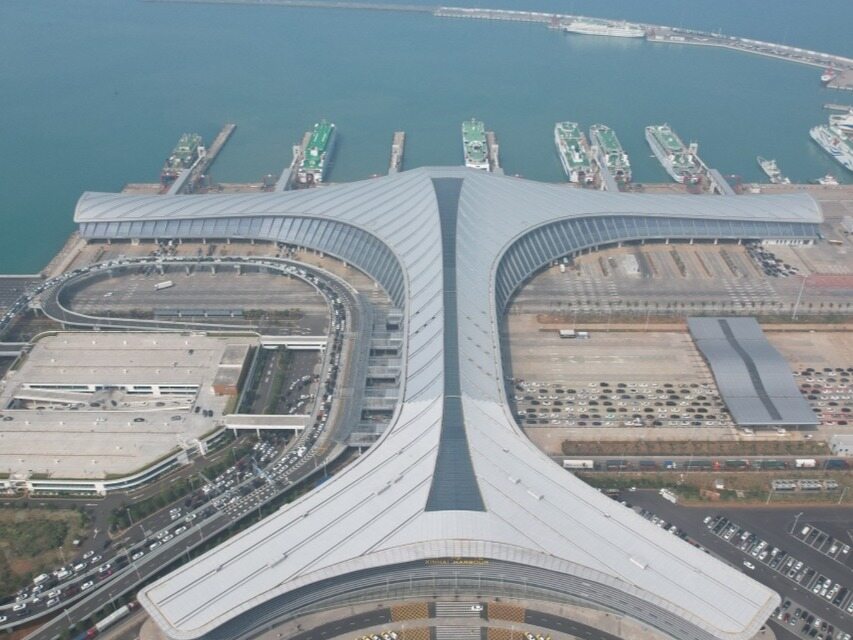- The main line from Tianfu to Chaoyang Lake Station is 80.6 kilometers, and there are 5 stations along the line
- The design speed is 160 kilometers per hour, and the plane is reserved for the speed of 200 kilometers per hour. It is planned to be completed in 2025

Recently, the National Railway Group and the provincial government approved the feasibility study report on the Sichuan-Tibet Railway introducing the Chengdu hub from Tianfu to Chaoyang Lake. In the next step, the Provincial Development and Reform Commission (Provincial Railway Airport Office) will conscientiously implement the arrangements and deployments of the Provincial Party Committee and the Provincial Government, anchor the target tasks, time nodes, refine key tasks, clarify the division of responsibilities, and urge and coordinate construction units to accelerate the preparation of preliminary designs. and environmental impact assessment, soil and water conservation and other pre-requisites for the work, and strive to have the conditions for full-scale construction within this year.
Sichuan-Tibet Railway Tianchao Section
According to the plan, the new Sichuan-Tibet Railway will be introduced into the Chengdu hub from Tianfu to Chaoyang Lake. The project line will start from Tianfu New District in Chengdu and lead from the railway Tianfu Station. It will pass through Tianfu New District, Shuangliu District, Xinjin District, Meishan City Tianfu New District, Pengshan District, Qionglai City , After Pujiang County, the existing Chengya Railway Chaoyang Lake Station Ya'an side was introduced.
Zizaicheng leads from the west end of Chengdu Tianfu Railway Station, crosses the Chengren Expressway, and goes westward along the existing Chengkun truck outer winding channel. Go down through Tianfu Avenue and then turn south, cross the Chengdu Second Ring Expressway, the Chengdu-Kunming Railway in turn, the large-scale outer ring road, after the Minjiang River, and cross the Chenggui Railway to set up the Xinjinnan Elevated Station, and then the line goes westwards successively. Cross the existing Chengya Expressway, set up Shou'an Station on the double line of Jiancheng-Le Expressway, Pujiang River to the north of Shou'an Town, Pujiang County. The positive line of the Ya'an end interval.
The main line from Tianfu to Chaoyang Lake Station is 80.6 kilometers; the connecting line to Puxing Station of Chengdu-Kunming Railway is 10.1 kilometers, and the connecting line to Chengdu-Kunming Railway to Kunming is 3.4 kilometers; it is planned to adopt the standard of National Railway Class I, double-track and 160 kilometers per hour (The speed of 200 kilometers per hour is reserved for the plane); There are 5 stations along the line: Tianfu, Xinjinnan, Shou'an, Pujiang, and Chaoyang Lake. The estimated total investment of the project is about 12.6 billion yuan.
The new Sichuan-Tibet Railway is introduced into the Chengdu hub Tianfu-Chaoyang Lake section with a total of 55 bridges, with a total length of about 64km (including the connecting line and the right line); 6 new tunnels with a total length of about 3km. Construction is planned to begin in 2022 and is expected to be completed in 2025.
Relying on the high-speed railway along the Yangtze River to the east, the project can directly reach the eastern and central regions such as the middle reaches of the Yangtze River and the Yangtze River Delta urban agglomeration, and to the west through the Sichuan-Tibet Railway directly to Lhasa. There is a direct train from Shanghai to Lhasa.

It is understood that the introduction of the Sichuan-Tibet Railway into the Chengdu hub from Tianfu to Chaoyang Lake is an important part of the Sichuan-Tibet railway channel. It is necessary to give full play to the function of the Sichuan-Tibet Railway as a national strategic channel, ensure the supply of materials for the construction of the Sichuan-Tibet Railway, and enhance the capacity of the main hub of the Chengdu Railway. significant. After the completion of the project, the east end will be connected to the Chengdu hub and the high-speed railway along the Yangtze River (Chengdawan) and Rongkun (Chengziyi), which can lead to the southwest and the eastern and central regions; the west end will be connected to the Sichuan-Tibet Railway, Qinghai-Tibet Railway and the planned Xinhai-Tibet Railway It can lead to the northwest, Xinjiang and other regions, and is an important part of the external transportation channels of Sichuan Province and Tibet Autonomous Region. Editor/He Yuting
Comment
 Praise
Praise
 Collect
Collect
 Comment
Comment
 Search
Search














Write something~